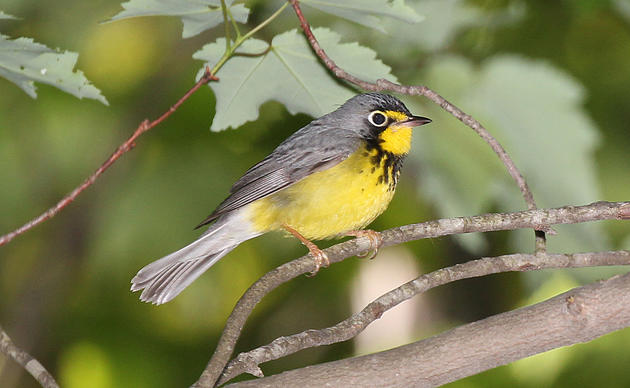Catskill Peaks Forest
Approximately 97% of the Catskills peaks are forested, and although most of the site is administered by NYS DEC, some is privately owned as well. Audubon New York aims to offer forest landowners with assistance and management recomendations to create healthy forests that benefit birds and natural habitats.
An Officially Designated Important Bird Area (IBA)
The Catskill Peaks Area is an official Audubon Important Bird Area (IBA), and includes one of the largest contiguous forest tracts in the state. Located within the Catskill Park, this site includes Appalachian oak-pine, deciduous wetland, evergreen northern hardwood, evergreen plantation, evergreen wetland, spruce-fir, oak, and sugar maple mesic forests.
The Catskill peaks over 3,000 feet support a distinctive sub-alpine bird community including breeding Yellow-bellied Flycatchers, Swainson's Thrushes, Hermit Thrushes, Magnolia Warblers, Yellow-rumped Warblers, White-throated Sparrows, and Dark-eyed Juncos. Peaks over 3,500 feet support breeding Bicknell's Thrushes and Blackpoll Warblers. This is the southernmost extension of the breeding range of these two species.
Other at-risk species found at the site include the American Black Duck (breeds), Osprey (breeds), Bald Eagle (observed in breeding season), Sharp-shinned Hawk (breeds), Cooper's Hawk (breeds), Northern Goshawk (breeds), Red-shouldered Hawk (breeds), Peregrine Falcon (breeds), American Woodcock (breeds), Olive-sided Flycatcher (breeds), Wood Thrush (breeds), Cerulean Warbler (breeds), and Canada Warbler (breeds).
Conservation Issues
Portions of this site have been designated a state Bird Conservation Area. High elevation habitats are relatively secure throughout the Catskills because they are state-owned and protected under the state constitution. However, the Catskill Peaks are very popular for recreation, particularly hiking and, in some localities, mountain biking. More research is needed on whether bird populations are significantly impacted by current levels of human visitation. Permanent protection of the remaining privately owned portions is needed to prevent their development and conversion to non-forest uses.
More research is also needed on possible impacts that acid rain may be having on the nesting success of songbirds, particularly at high elevations. Acid rain can kill snails, whose shells provide a source of calcium needed for egg production in birds; it can also kill trees, thereby degrading songbird habitat. The curtailment of sulfur dioxide emissions and the reduction of acid rain is currently a significant NY State initiative.
Habitat Improvement for Birds and Other Wildlife
The Catskills are a vital component of Audubon New York’s Eastern Forest priority program which also includes forest focus areas in the Adirondacks, Finger Lakes, Tug Hill, Allegany, and Hudson Highlands regions.
We're working with landowners and managers in the Adirondacks to help manage privately owned forest in ways that support birds and the bottom line. Visit our Healthy Forest Resource Center to download free resources and learn more about how you can help.
How you can help, right now
Donate to Audubon
Help secure the future for birds at risk from climate change, habitat loss and other threats. Your support will power our science, education, advocacy and on-the-ground conservation efforts.




